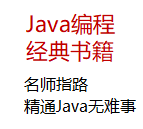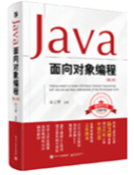|
|
1.Promise.prototype.then()方法Promise 实例具有then方法,也就是说,then方法是定义在原型对象Promise.prototype上的。它的作用是为 Promise 实例添加状态改变时的回调函数。then方法的第一个参数是resolved状态的回调函数,第二个参数(可选)是rejected状态的回调函数。
then方法返回的是一个新的Promise实例(注意,不是原来那个Promise实例)。因此可以采用链式写法,即then方法后面再调用另一个then方法。
getJSON("/posts.json").then(function(json) {
return json.post;
}).then(function(post) {
// ...
}); |
上面的代码使用then方法,依次指定了两个回调函数。第一个回调函数完成以后,会将返回结果作为参数,传入第二个回调函数。
采用链式的then,可以指定一组按照次序调用的回调函数。这时,前一个回调函数,有可能返回的还是一个Promise对象(即有异步操作),这时后一个回调函数,就会等待该Promise对象的状态发生变化,才会被调用。
getJSON("/post/1.json").then(function(post) {
return getJSON(post.commentURL);
}).then(function funcA(comments) {
console.log("resolved: ", comments);
}, function funcB(err){
console.log("rejected: ", err);
}); |
上面代码中,第一个then方法指定的回调函数,返回的是另一个Promise对象。这时,第二个then方法指定的回调函数,就会等待这个新的Promise对象状态发生变化。如果变为resolved,就调用funcA,如果状态变为rejected,就调用funcB。
如果采用箭头函数,上面的代码可以写得更简洁。
getJSON("/post/1.json").then(
post => getJSON(post.commentURL)
).then(
comments => console.log("resolved: ", comments),
err => console.log("rejected: ", err)
); |
2.Promise.prototype.catch()方法Promise.prototype.catch方法是.then(null, rejection)的别名,用于指定发生错误时的回调函数。
getJSON('/posts.json').then(function(posts) {
// ...
}).catch(function(error) {
// 处理 getJSON 和 前一个回调函数运行时发生的错误
console.log('发生错误!', error);
}); |
上面代码中,getJSON方法返回一个 Promise 对象,如果该对象状态变为resolved,则会调用then方法指定的回调函数;如果异步操作抛出错误,状态就会变为rejected,就会调用catch方法指定的回调函数,处理这个错误。另外,then方法指定的回调函数,如果运行中抛出错误,也会被catch方法捕获。
p.then((val) => console.log('fulfilled:', val))
.catch((err) => console.log('rejected', err));
// 等同于
p.then((val) => console.log('fulfilled:', val))
.then(null, (err) => console.log("rejected:", err)); |
下面是一个例子
const promise = new Promise(function(resolve, reject) {
throw new Error('test');
});
promise.catch(function(error) {
console.log(error);
});
// Error: test |
上面代码中,promise抛出一个错误,就被catch方法指定的回调函数捕获。注意,上面的写法与下面两种写法是等价的
// 写法一
const promise = new Promise(function(resolve, reject) {
try {
throw new Error('test');
} catch(e) {
reject(e);
}
});
promise.catch(function(error) {
console.log(error);
});
// 写法二
const promise = new Promise(function(resolve, reject) {
reject(new Error('test'));
});
promise.catch(function(error) {
console.log(error);
}); |
比较上面两种写法,可以发现reject方法的作用,等同于抛出错误。
如果 Promise 状态已经变成resolved,再抛出错误是无效的。
const promise = new Promise(function(resolve, reject) {
resolve('ok');
throw new Error('test');
});
promise
.then(function(value) { console.log(value) })
.catch(function(error) { console.log(error) });
// ok |
上面代码中,Promise 在resolve语句后面,再抛出错误,不会被捕获,等于没有抛出。因为 Promise 的状态一旦改变,就永久保持该状态,不会再变了。
Promise 对象的错误具有“冒泡”性质,会一直向后传递,直到被捕获为止。也就是说,错误总是会被下一个catch语句捕获。
getJSON('/post/1.json').then(function(post) {
return getJSON(post.commentURL);
}).then(function(comments) {
// some code
}).catch(function(error) {
// 处理前面三个Promise产生的错误
}); |
上面代码中,一共有三个 Promise 对象:一个由getJSON产生,两个由then产生。它们之中任何一个抛出的错误,都会被最后一个catch捕获。
一般来说,不要在then方法里面定义 Reject 状态的回调函数(即then的第二个参数),总是使用catch方法
// bad
promise
.then(function(data) {
// success
}, function(err) {
// error
});
// good
promise
.then(function(data) { //cb
// success
})
.catch(function(err) {
// error
}); |
上面代码中,第二种写法要好于第一种写法,理由是第二种写法可以捕获前面then方法执行中的错误,也更接近同步的写法(try/catch)。因此,建议总是使用catch方法,而不使用then方法的第二个参数。
跟传统的try/catch代码块不同的是,如果没有使用catch方法指定错误处理的回调函数,Promise 对象抛出的错误不会传递到外层代码,即不会有任何反应。
const someAsyncThing = function() {
return new Promise(function(resolve, reject) {
// 下面一行会报错,因为x没有声明
resolve(x + 2);
});
};
someAsyncThing().then(function() {
console.log('everything is great');
});
setTimeout(() => { console.log(123) }, 2000);
// Uncaught (in promise) ReferenceError: x is not defined
// 123 |
上面代码中,someAsyncThing函数产生的 Promise 对象,内部有语法错误。浏览器运行到这一行,会打印出错误提示ReferenceError: x is not defined,但是不会退出进程、终止脚本执行,2 秒之后还是会输出123。这就是说,Promise 内部的错误不会影响到 Promise 外部的代码,通俗的说法就是“Promise 会吃掉错误”。
这个脚本放在服务器执行,退出码就是0(即表示执行成功)。不过,Node 有一个unhandledRejection事件,专门监听未捕获的reject错误,上面的脚本会触发这个事件的监听函数,可以在监听函数里面抛出错误。
process.on('unhandledRejection', function (err, p) {
throw err;
}); |
上面代码中,unhandledRejection事件的监听函数有两个参数,第一个是错误对象,第二个是报错的 Promise 实例,它可以用来了解发生错误的环境信息。
注意,Node 有计划在未来废除unhandledRejection事件。如果 Promise 内部有未捕获的错误,会直接终止进程,并且进程的退出码不为 0。
再看下面的例子。
const promise = new Promise(function (resolve, reject) {
resolve('ok');
setTimeout(function () { throw new Error('test') }, 0)
});
promise.then(function (value) { console.log(value) });
// ok
// Uncaught Error: test |
上面代码中,Promise 指定在下一轮“事件循环”再抛出错误。到了那个时候,Promise 的运行已经结束了,所以这个错误是在 Promise 函数体外抛出的,会冒泡到最外层,成了未捕获的错误。
一般总是建议,Promise 对象后面要跟catch方法,这样可以处理 Promise 内部发生的错误。catch方法返回的还是一个 Promise 对象,因此后面还可以接着调用then方法。
const someAsyncThing = function() {
return new Promise(function(resolve, reject) {
// 下面一行会报错,因为x没有声明
resolve(x + 2);
});
};
someAsyncThing()
.catch(function(error) {
console.log('oh no', error);
})
.then(function() {
console.log('carry on');
});
// oh no [ReferenceError: x is not defined]
// carry on |
上面代码运行完catch方法指定的回调函数,会接着运行后面那个then方法指定的回调函数。如果没有报错,则会跳过catch方法。
Promise.resolve()
.catch(function(error) {
console.log('oh no', error);
})
.then(function() {
console.log('carry on');
});
// carry on |
上面的代码因为没有报错,跳过了catch方法,直接执行后面的then方法。此时,要是then方法里面报错,就与前面的catch无关了。
catch方法之中,还能再抛出错误。
const someAsyncThing = function() {
return new Promise(function(resolve, reject) {
// 下面一行会报错,因为x没有声明
resolve(x + 2);
});
};
someAsyncThing().then(function() {
return someOtherAsyncThing();
}).catch(function(error) {
console.log('oh no', error);
// 下面一行会报错,因为 y 没有声明
y + 2;
}).then(function() {
console.log('carry on');
});
// oh no [ReferenceError: x is not defined] |
上面代码中,catch方法抛出一个错误,因为后面没有别的catch方法了,导致这个错误不会被捕获,也不会传递到外层。如果改写一下,结果就不一样了。
someAsyncThing().then(function() {
return someOtherAsyncThing();
}).catch(function(error) {
console.log('oh no', error);
// 下面一行会报错,因为y没有声明
y + 2;
}).catch(function(error) {
console.log('carry on', error);
});
// oh no [ReferenceError: x is not defined]
// carry on [ReferenceError: y is not defined] |
上面代码中,第二个catch方法用来捕获,前一个catch方法抛出的错误。
原文链接:
https://blog.csdn.net/weixin_37719279/article/details/80951280
程序猿的技术大观园:www.javathinker.net
|
|

















